Down by the Creek
Exploring the Hundred Acre Wood
Warm winter days are best spent at the creek, laying back in the soft sand bed of a shoal, sun on your chest, watching the white tufts of cloud drift across the deep blue sky.
We’re lucky to have a creek nearby. Step out the back door and hang a right. Walk past the garden, past the blue bus, past the pump house, and you’ll come to a partially overgrown path that twists around a massive, skeletal oak tree before disappearing into the shadows of the deeper pine woods that surround us.
Along the way you’ll see the remains of buildings, a mound of bricks, old, rusting early 20th century farm equipment, unnatural rows of daffodils marking the remnants of a once-loved structure, now crumbled back into the forest floor.
Keep going down the path — watch your step around the small bog near the brick pile — and then the undergrowth thins, the shadows deepen, and the pine woods begin. In less than fifty feet you will no longer be able to see the house you left behind.
Once you could have seen for miles. A century ago this was all wide open farm land, cotton fields. If you’d headed across the road, into the woods on the other side of our place, you might run into some old sharecropper cabins, though I’ve never been able to find them.
I’m not sure who originally planted the pines that are here now, but it’s a very different land than it was even fifty years ago. It bears no resemblance at all to the accounts of William Bartram, who walked these parts around the time of the American Revolution. Bartram writes of this area that, “these hills are shaded with glorious magnolia, red mulberry, basswood, oak, white elm, walnuts, with aromatic groves of fragrant spice bush, rhododendron, red buckeye, Azalea, flowering dogwood, and even shooting star.”1
I am no botanist, but you need not be one to notice that the woods we’re walking in are not diverse enough to contain that many species. The hardwoods have been gone for a century, except back by the house, where planted pecans, walnuts, and oaks showered us with nuts all through the fall.
Oaks are the only real survivors from Bartram’s day. There are still oaks down in the creek bottoms. The old growth hardwoods may be gone, but newer trees are still to be found. Pines don’t like soggy soil, so once you make it past the mounds of bricks, the occasional glade the hunting club has cleared, and follow the slope of the land down into the creek bottoms, you get back into the oaks.
One thing that is still down here is gold. Normally I am a birdwatcher, I leave the rocks and fossils to Corrinne. But it’s winter, which means bird life is largely limited to the mixed flocks of chickadees, titmice, and wrens that inhabit the southern Appalachian woodlands this time of year. There is a Yellow-bellied Sapsucker that’s been working on the large pecan tree that hangs over the bus for months now, but the flood of migrants that really gets birdwatchers like me up in the morning won’t start for another month or two.
So rocks. In streams. We’re in a borderland, geologically speaking, which is always the place to be — edges are where everything gets interesting.
We’re between the Appalachian foothills, which you can see on a clear day if you get out of the forest, and what gets called the low country, the part of the state below the Fall Line, where the Piedmont foothills and Atlantic coastal plain meet. We’re technically in the upcountry, but at the very edge of it. We’re where everything washes down to, where the waters slow, meander, and the rocks start to collect.
Under the omnipresent layer of red clay there’s a mish-mash of schists that bubble up, everything from quartz to amphibolite to gold. There are certainly a lot of golden flakes in the sand at the bottom of the creek. Is it all gold? Probably not. Is some of it? Most likely.
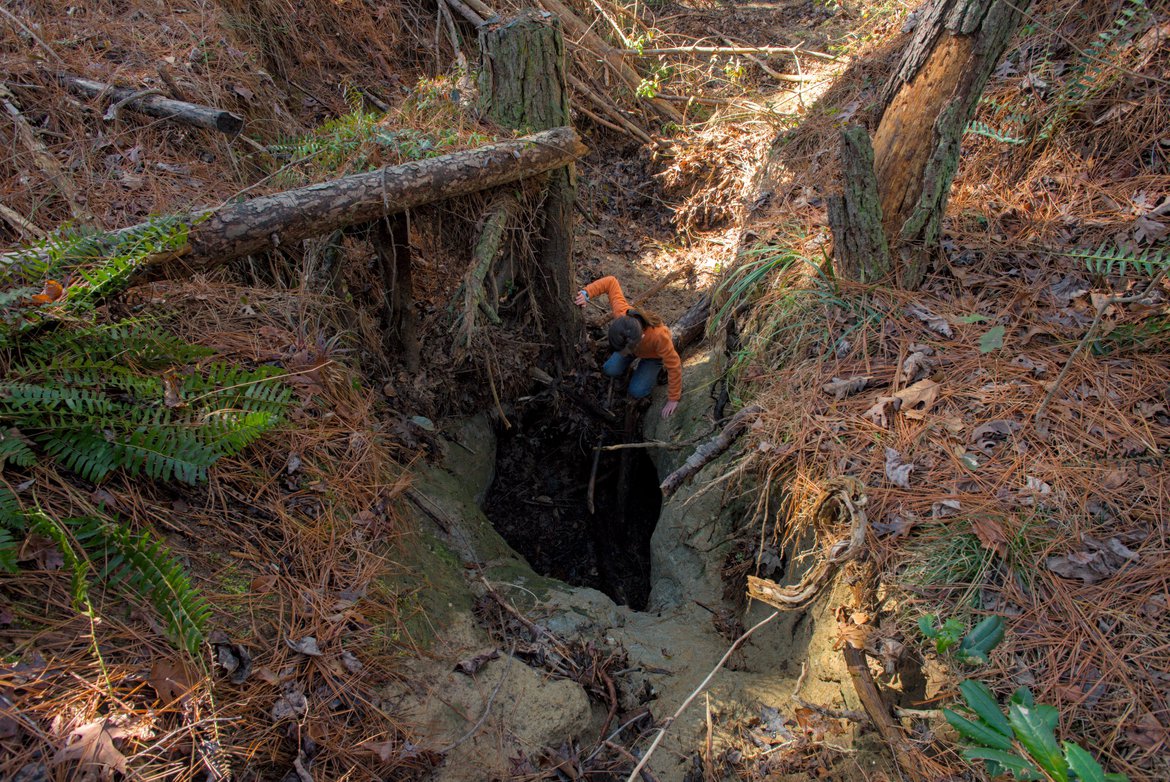
The kids have reached a stage of childhood I remember well, the one where you don’t go more than a few hours without food. We usually bring some sandwiches for lunch and eat them down on the sand bars at the edge of an old fence that might mark the edge of the property. We’re not really clear on where things begin and end back in the woods, but we err of the side of let’s call that the property line since we’re guests here at best.
Heading back through the woods we eventually pick up one of the hunting club trails which help avoid the tangles of thorny vines that make bushwhacking slow going. The thorns seem to have some kind of sap that makes them itch like a mosquito bite when they break your skin.
Retrace your steps past the crumbled remains of brick out buildings, back round the huge dead oak, and you’re back in our yard, staring at the bus, thinking,
The woods are lovely, dark and deep,
But I have promises to keep,
And miles to go before I sleep,
And miles to go before I sleep.
Or maybe that’s just me.
-
I’ve taken the liberty of swapping common names for the scientific names Bartram actually wrote. ↩
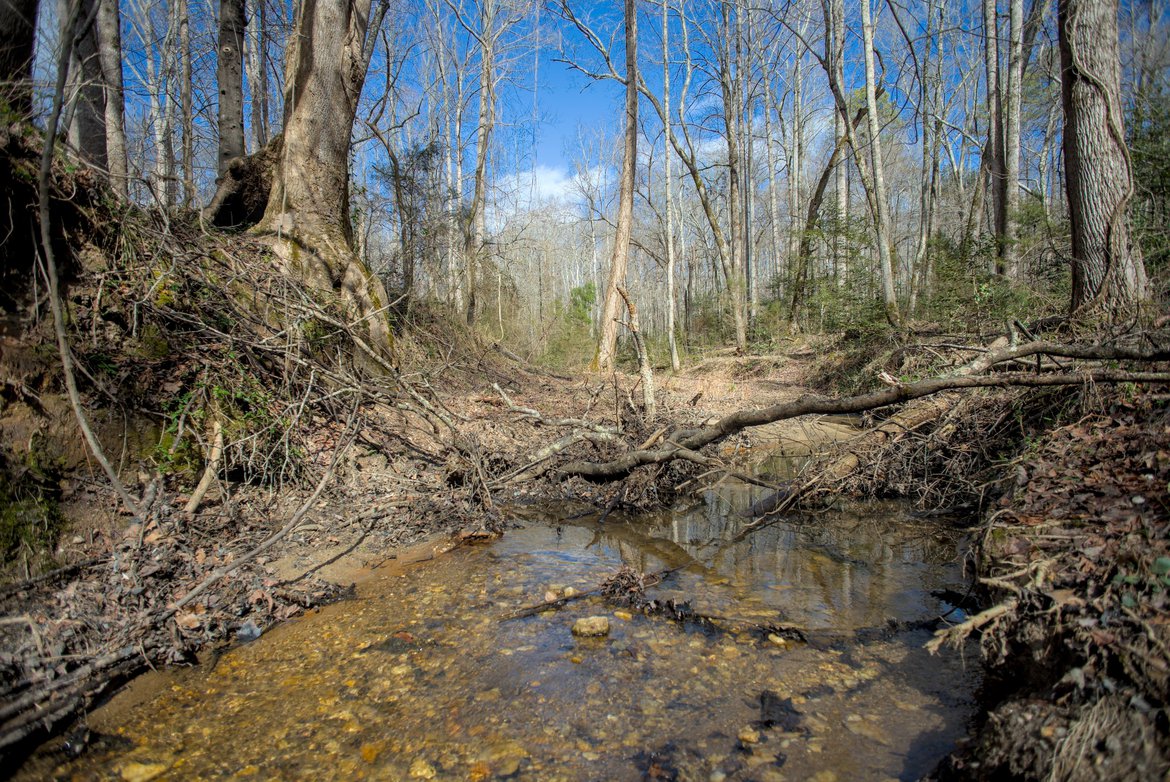
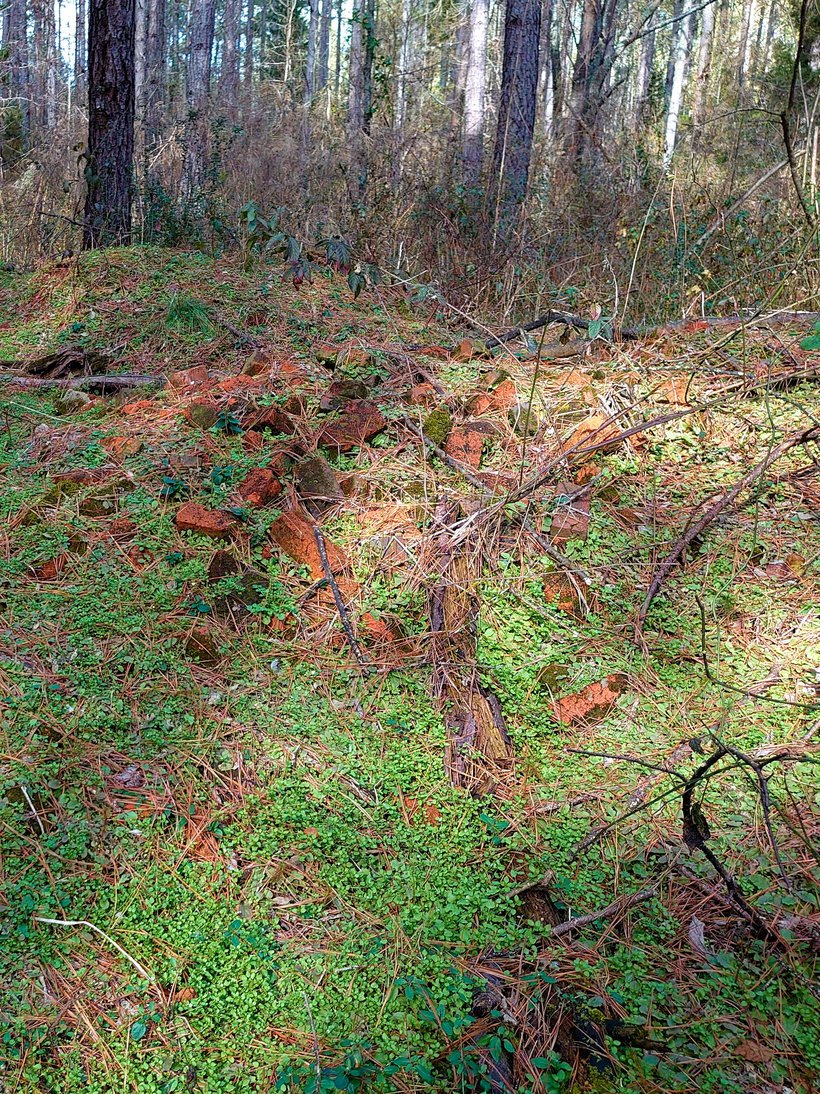

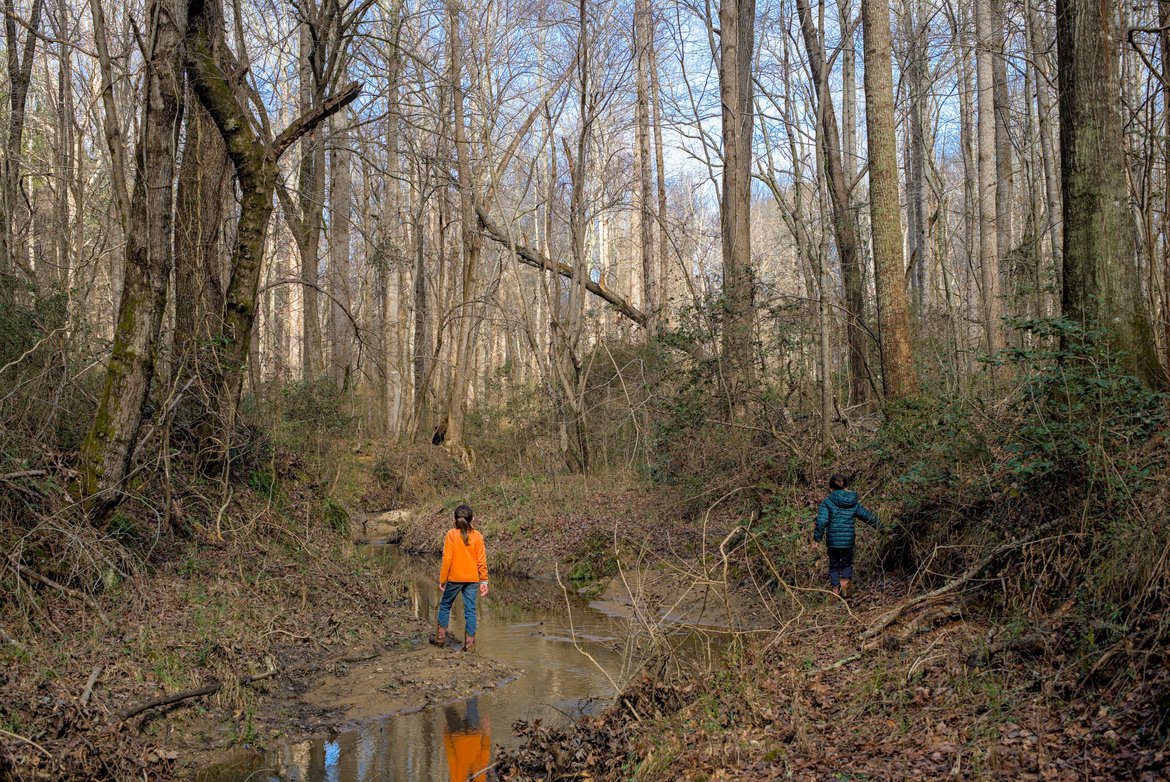
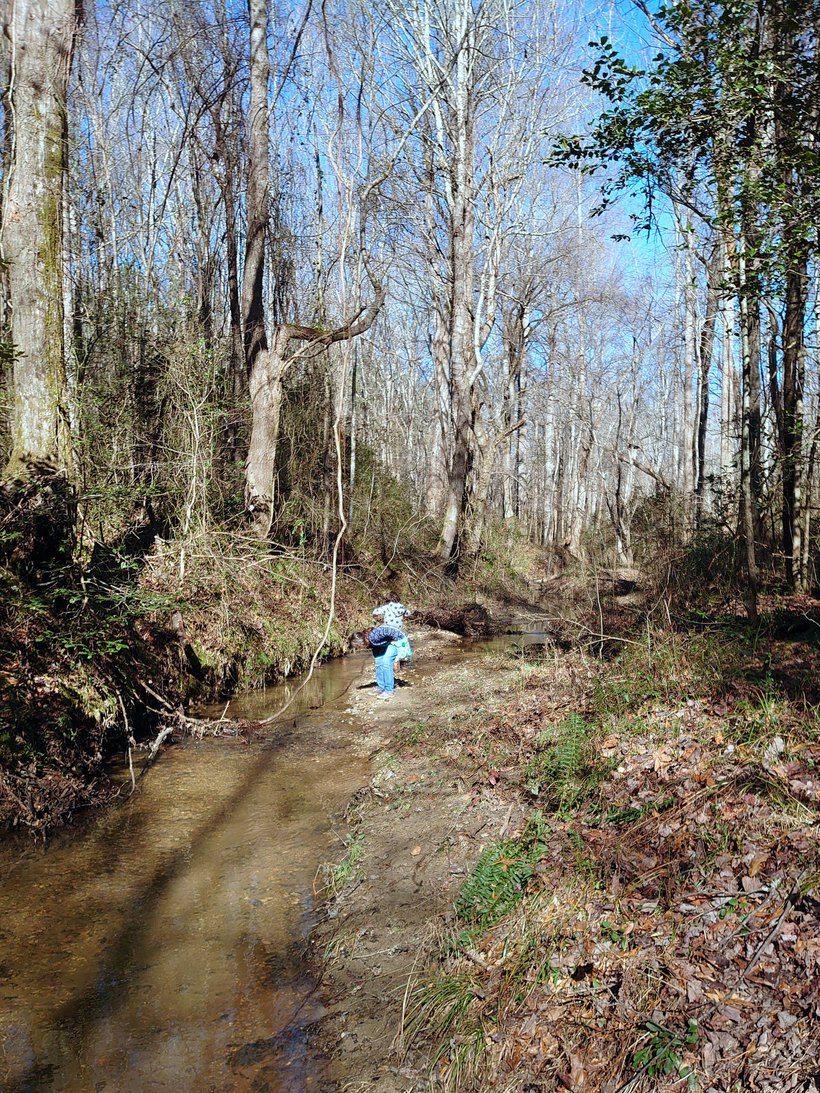
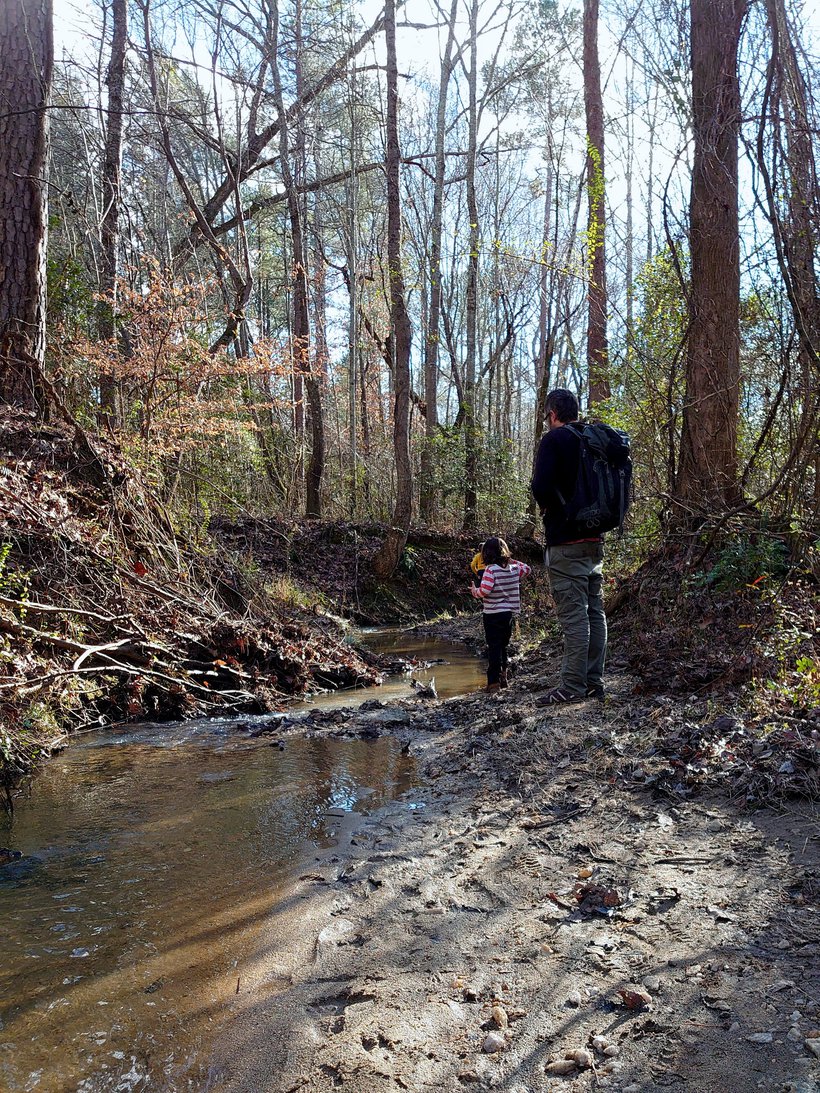
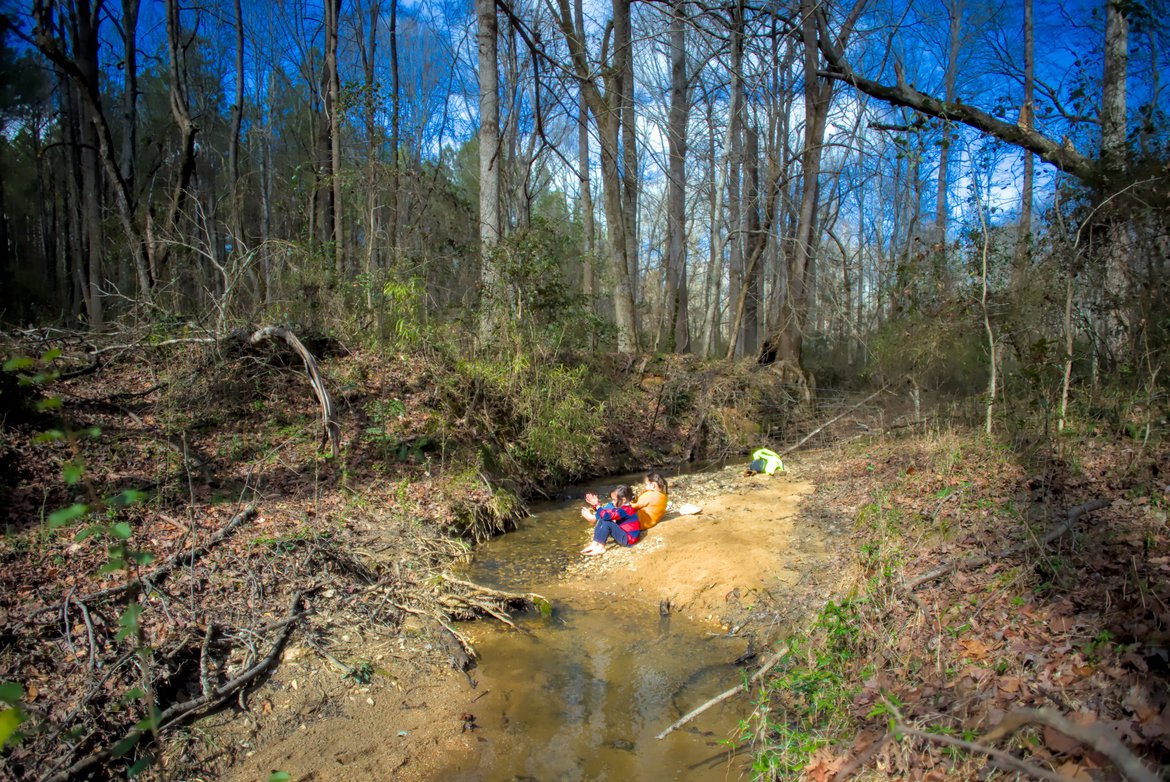
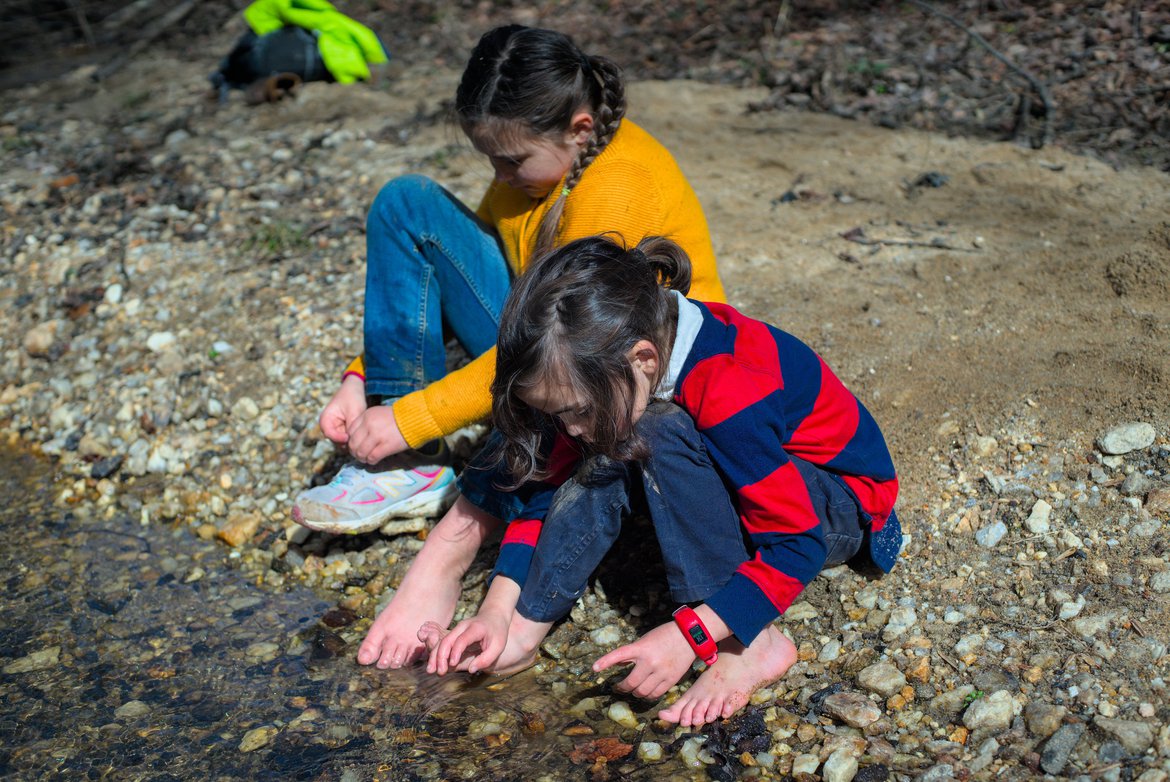
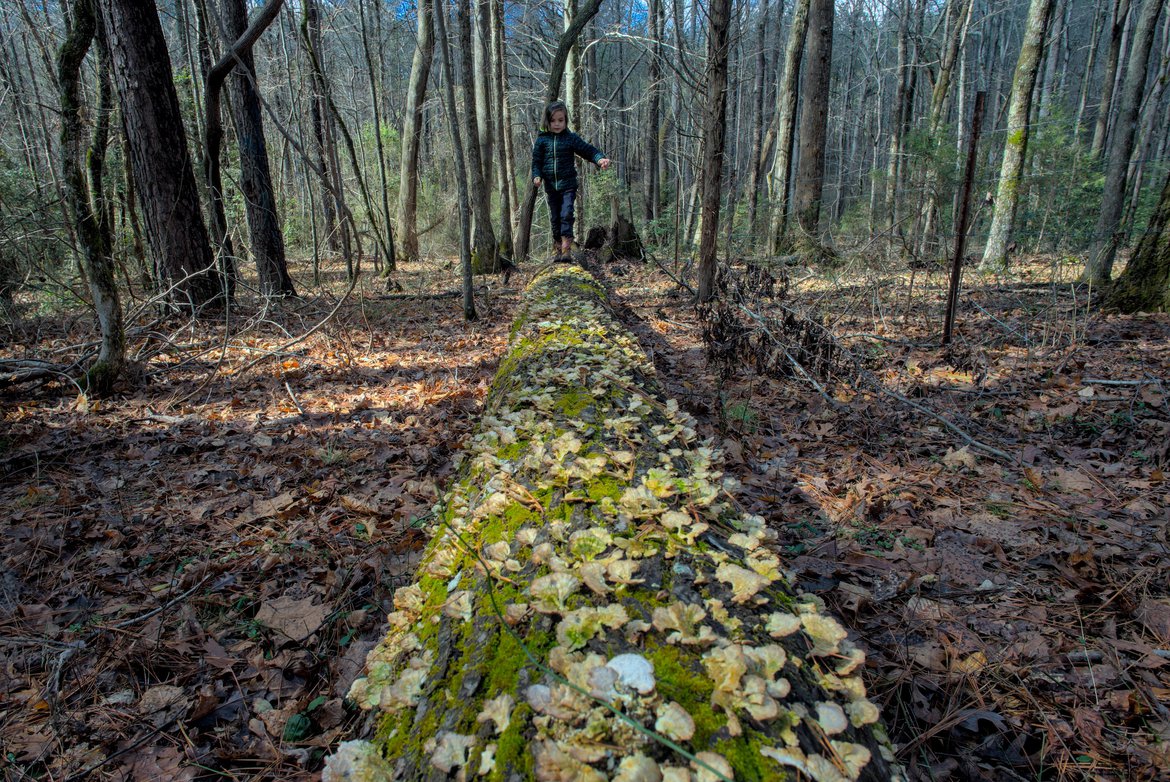
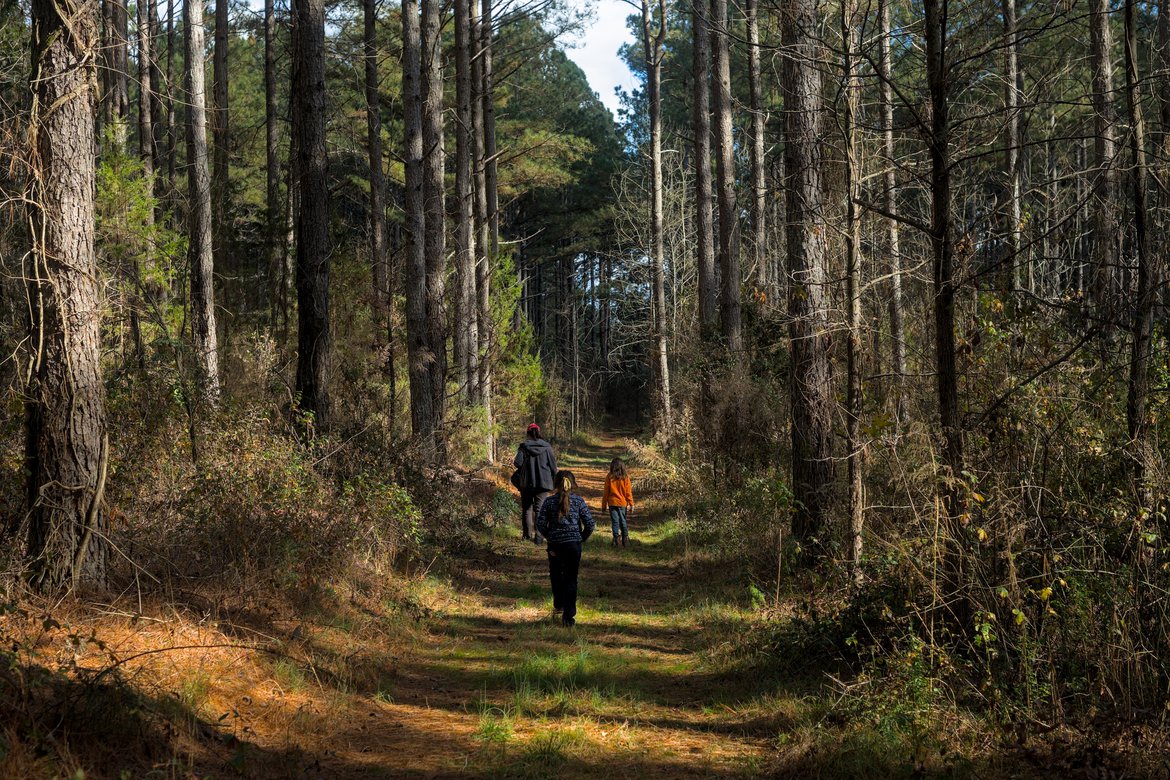
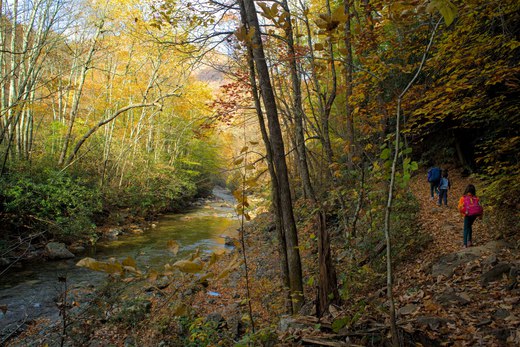
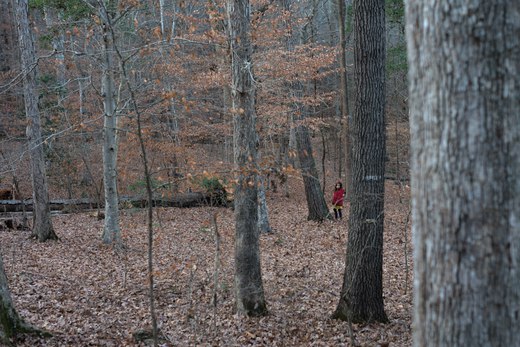
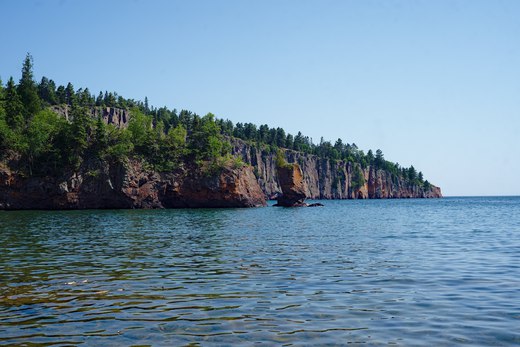
Thoughts?
Please leave a reply:
All comments are moderated, so you won’t see it right away. And please remember Kurt Vonnegut's rule: “god damn it, you’ve got to be kind.” You can use Markdown or HTML to format your comments. The allowed tags are
<b>, <i>, <em>, <strong>, <a>. To create a new paragraph hit return twice.